December 17, 2020
The desert can be chilly at night in the winter, but we were warm with our extra blanket. Bugs don’t like the cool dry air so we slept with the windows open and no screens attached. Within minutes of waking up, the Jetboil was heating water for coffee (it’ll boil enough for one cup in about a minute) and the Coleman stove was starting breakfast. The sky was perfectly clear with a gentle breeze. The expected high would be in the mid-60’s. Perfect for what we had planned.
We headed about a mile farther up sandy Painted Canyon Road from our Mecca Hills campsite to where there was a small circular trailhead parking area with some soft sand around it. A small all-wheel-drive BMW SUV was stuck in the sand while three young men were trying to push it out. Before I could offer help, they had it back on firm footing. I relished the chance to pull out a stuck vehicle after recently getting a burly tow strap and shackles, but this would not be the time. A couple of SUVs were the only others at the trailhead. A path from the parking area up a wide sandy wash was said to lead to a challenging slot canyon. The name—Ladder Canyon—sounded intriguing.
We set off up the wash with a backpack filled with water, snacks, first aid kit, personal locater beacon (PLB), and room for outerwear that would certainly be shed as the morning chill wore off. Previous hikers had laid out a large arrow made of rocks that pointed in the direction of the canyon a few hundred yards up the wash. The opening of the canyon looked like a jumble of impassible giant boulders that had fallen from high above and blocked the entrance. We looked at the arrow again, then at the boulders, then at each other and smiled. This would be a challenge. I had not brought my hiking staff thinking that it would be hard to climb with, which turned out to be wise.
Eventually, we came to a sandy narrow flat area with a twelve-foot high wall in front of us. With no ladder, we gingerly climbed the sandstone wall, carefully placing hands and feet in tiny ledges, trying not to look down.
Like any good slot canyon, the walls were high above and narrow, barely allowing in any sun. It was chilly in the shade but we were warm from the climb. The canyon twisted and turned crazily as it climbed steeply.
Then the canyon seemed to end at another steep wall. But again, someone had placed a portion of beat-up aluminum ladder (complete with missing rungs) up against the wall. The ladder was very steep and extended about twelve feet against the vertical wall that was another three feet higher than the top of the ladder. I looked at it and asked Susan if she was ok going up it. But I knew the answer even before she said “of course!” Deep breath. Never a fan of heights, I got to the last rung only to have to scramble another few feet up the steep wall, now twelve feet up and ladderless, visions of tumbling down onto the jagged ladder (and Susan) in my head. Somehow, we both made it and rested at the top. It was quickly becoming apparent why Ladder Canyon was so named.
More climbing and a couple more smaller ladders got us higher and within a couple dozen feet of the top of the steep narrow walls above but still we climbed, pausing to catch our breath occasionally.
As we got higher, the sun reached us and we could start to feel the wind.
At the top it was windy and we donned the outerwear we’d taken off inside the canyon. The view was expansive in all directions and we could even see part of the Salton Sea about ten miles away as the crow flies. But now, we had to make a choice. We knew the trail was a loop but our information was unclear about the return and we saw several trails leading in multiple directions at the top. Some followed the ridgeline and some disappeared into other canyons. Eventually, we chatted with another couple at a resting spot near the confluence of two or three trails. One trail, they said, went down into Rope Canyon (which was just like Ladder Canyon except, ropes—including a 20-foot rope descent), while another traversed the ridge then went back down into Ladder Canyon (what we call a lollipop trail). We later learned there was a third return trail that mostly went along the ridge before descending onto Painted Canyon Road (which was really just a wash, not a road).
I had a recent hand injury and neither of us had gloves so we decided not to take the Rope Canyon trail and instead descended via the lollipop loop. It felt like walking into the middle of the earth as the canyon walls went from knee high to fifty feet in a matter of minutes. Scrambling over rocks and boulders—but downhill and somewhat easier—we eventually made it to the “stem” of the lollipop and retraced our steps back down. The rickety 12-foot ladder we faced going up was an even bigger challenge going down as we had to lower ourselves on our bellies until we could just feel—but not see–the jagged ladder. I still don’t know how Susan did it. She’s over half a foot shorter and I had trouble finding the ladder with my feet.
Finally, back at the entrance at the arrow in the sandy wash, we rested. A man and his four-year-old daughter wandered by asking us if we knew where Ladder Canyon was. We pointed to the not-at-all-obvious entrance at the pile of giant boulders and I asked the girl if she was a good climber. She squealed with delight and said she was. We told the father that if they could get up the steep ladder, they probably could do it, but I couldn’t picture taking a small child into the canyon. They went into the entrance and as we sat there, we heard the girl’s voice go from excited to apprehensive to scared. I doubted they would even make the first ladder at the entrance as we walked back to the truck.
We drove back past our peaceful giant campsite after the hike and briefly considered staying another night. But instead we decided to drive for a couple of hours to cross the border into Arizona where the government apparently thought there was no Covid. Or at least where, unlike California, it was permissible (even encouraged) to stay in a hotel or do pretty much anything else you wanted, pandemic be damned. By now we needed a shower and general clean-up. Truck stops offered showers but we thought that they were probably not as safe Covid-wise as a name-brand hotel. Plus, the hotels were only $30 more than two truck stop showers.
We decided to detour through nearby Joshua Tree National Park. Strangely, the miles of desert in the park had fewer Joshua trees than the roads we’d just been on. Sadly, in other remote parts of the park, over a million Joshua trees had been destroyed in the Dome Fire a few months earlier.
Halfway through the park, we stopped to take a short trail at the Cholla Cactus Garden, which was filled with odd Teddybear Chollas, so named because they looked cute and fuzzy, but weren’t. A sign along the trail said: Do not attempt to pet this teddybear. The stem-joints can easily detach and hitch a ride due to the miniscule barbs on the spines, giving it the nickname “jumping cholla.” Once they’ve latched on, the spines are very painful to remove. We stayed on the trail.
After a couple of hours of beautiful two-lane desert roads, we came to a large river in the middle of the desert—the Colorado. Just across the Colorado River was Parker, Arizona and we found a nice Choice Hotel for the night, where we could enjoy showers, charge our devices and re-freeze our cooler ice packs.

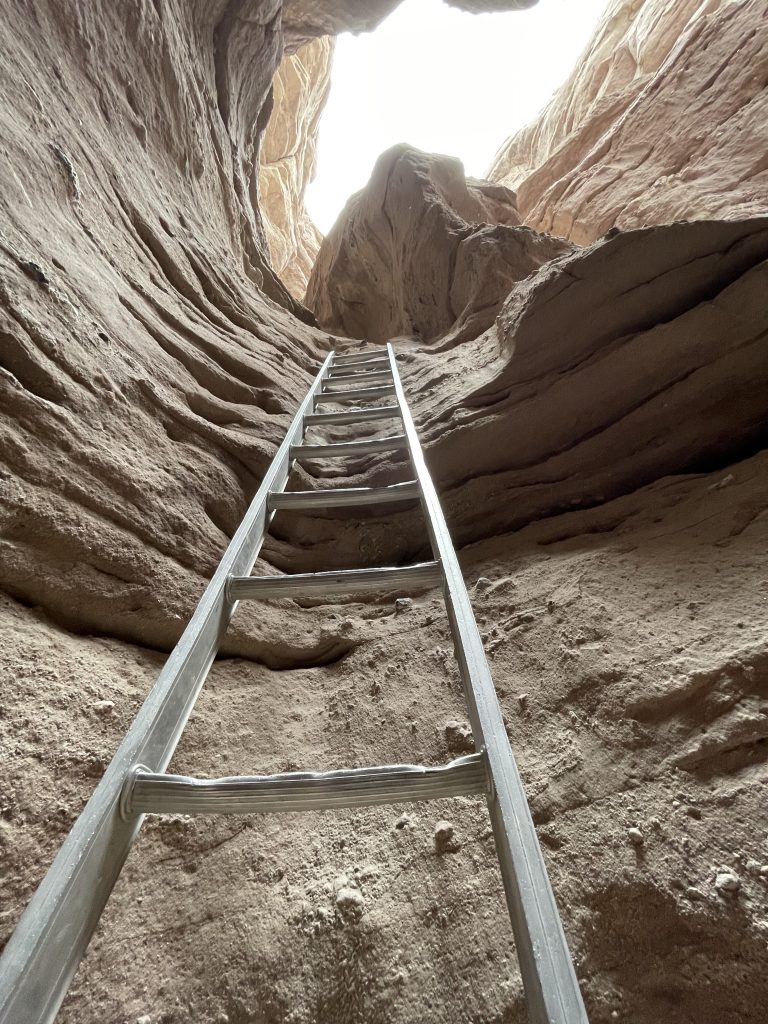
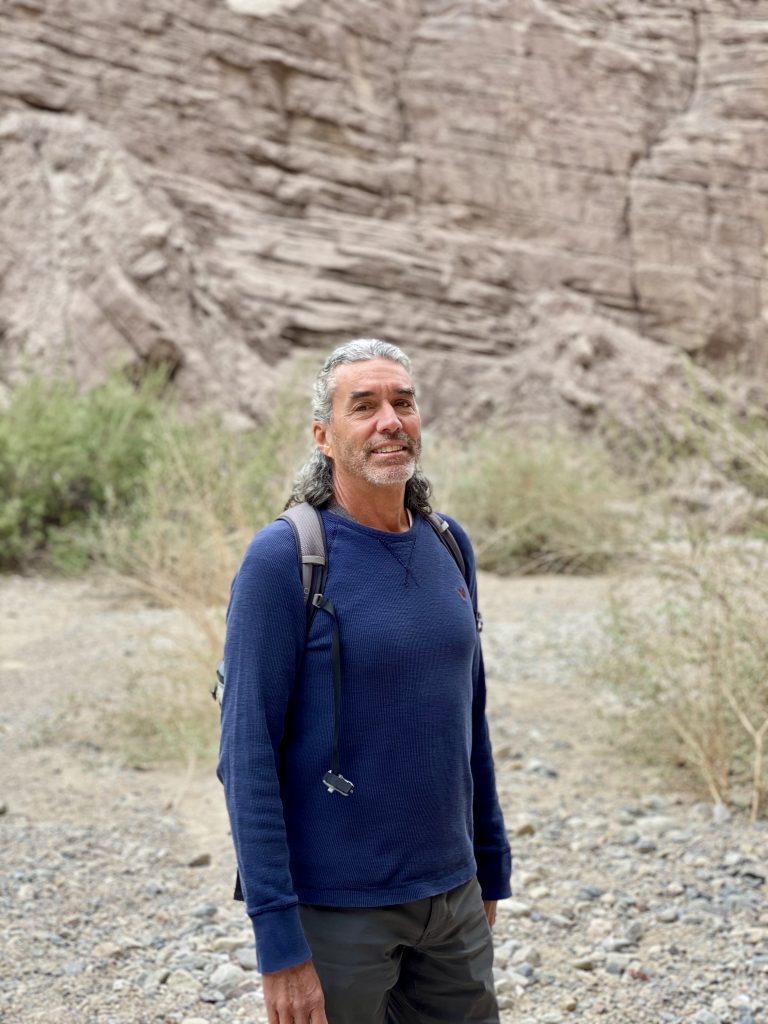
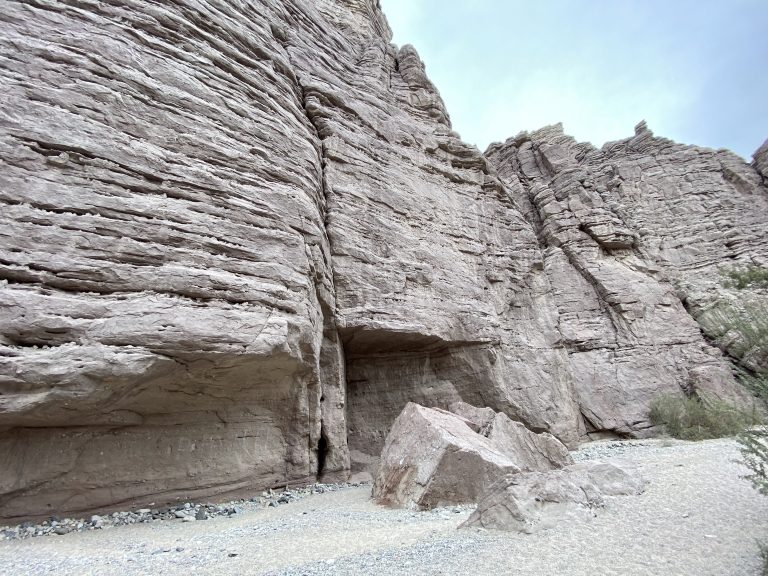
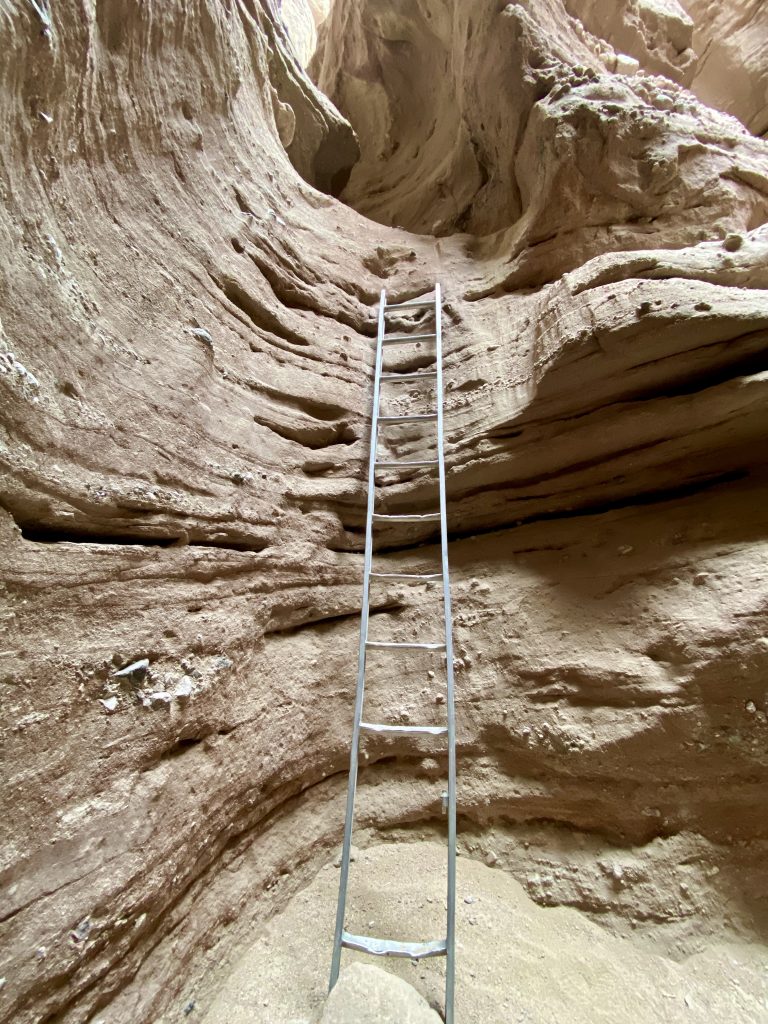
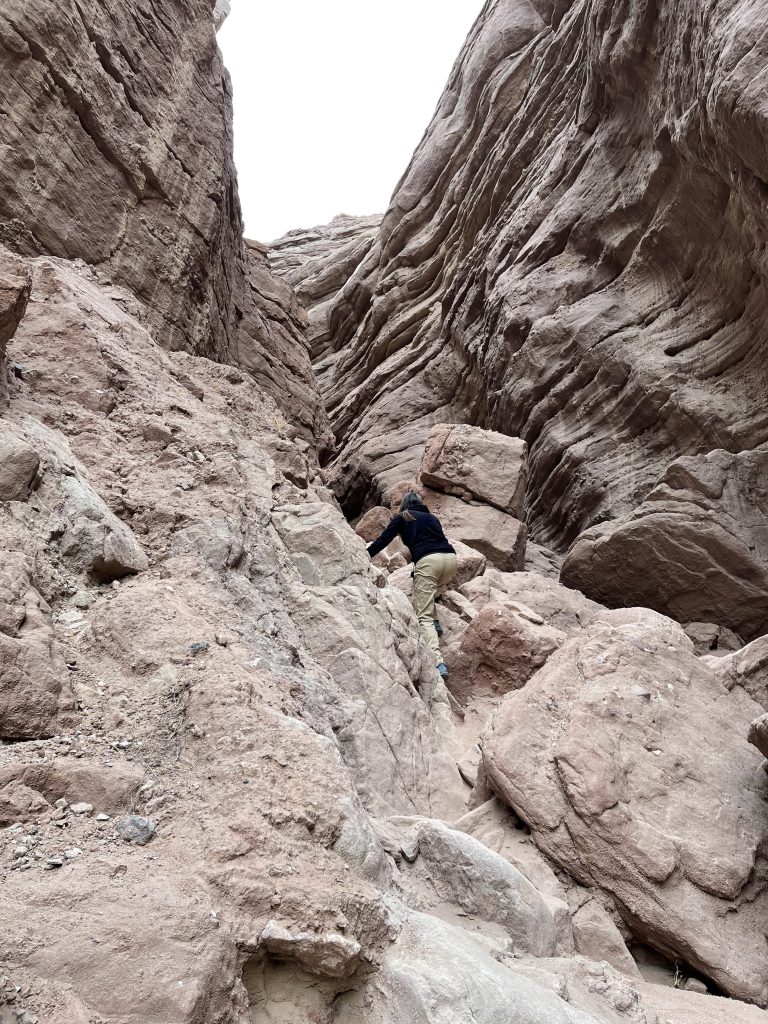
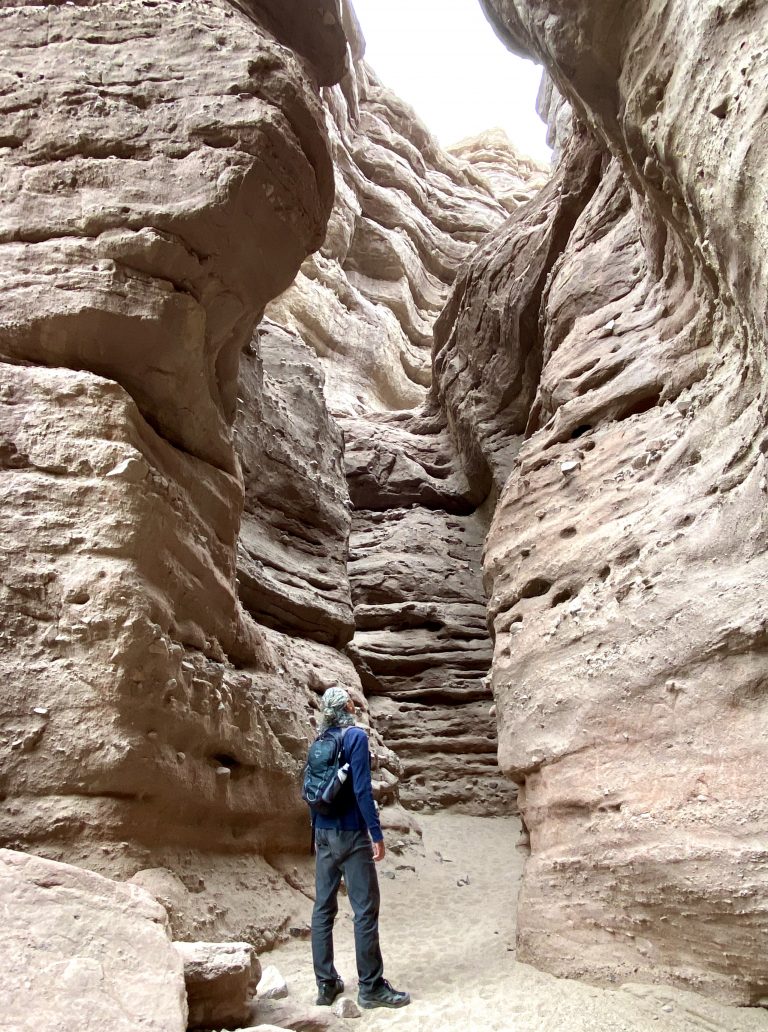
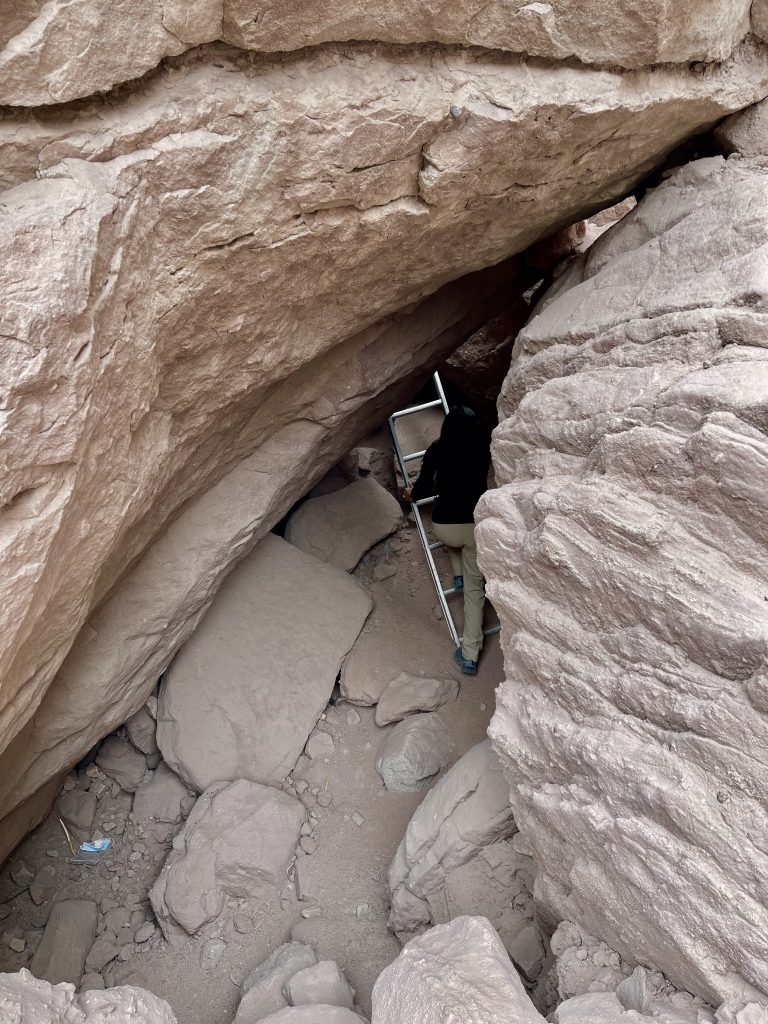
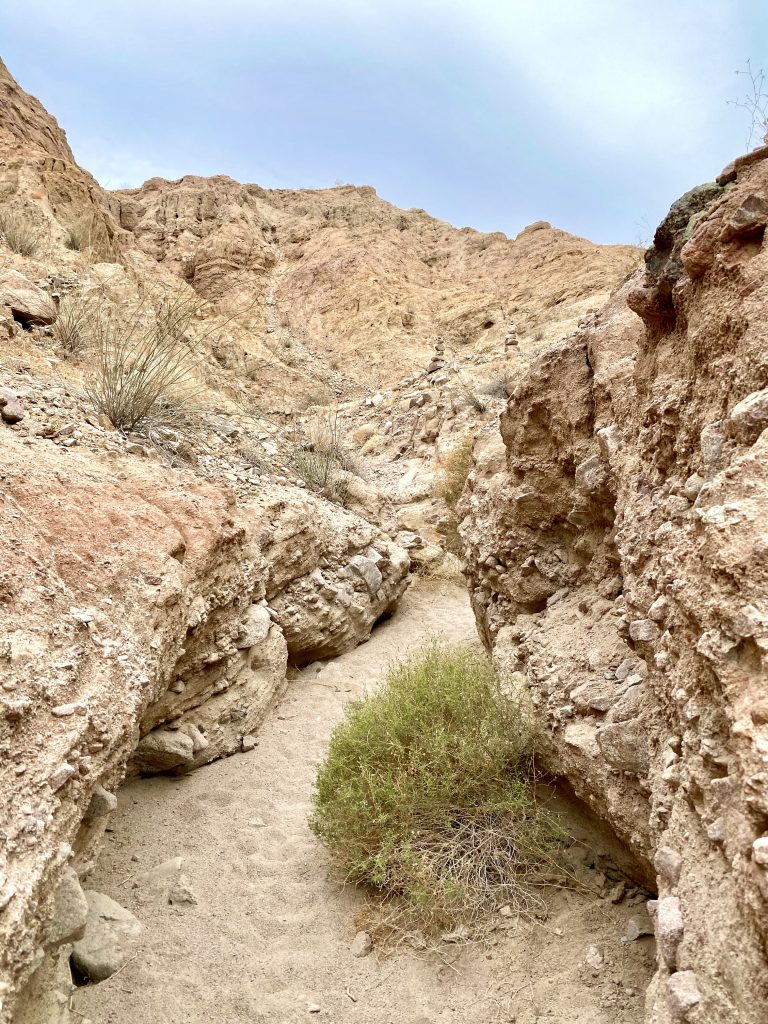

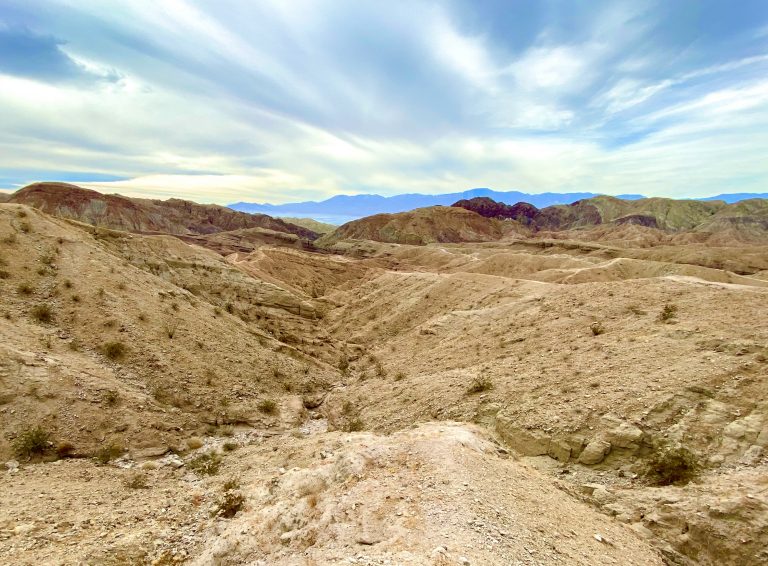
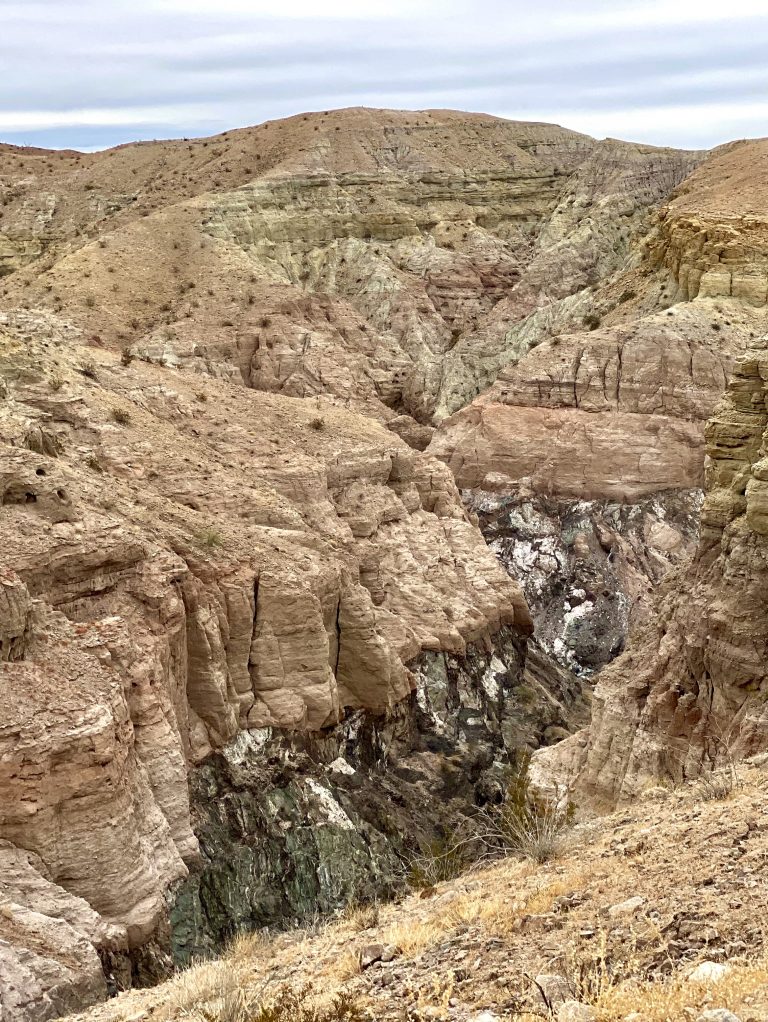
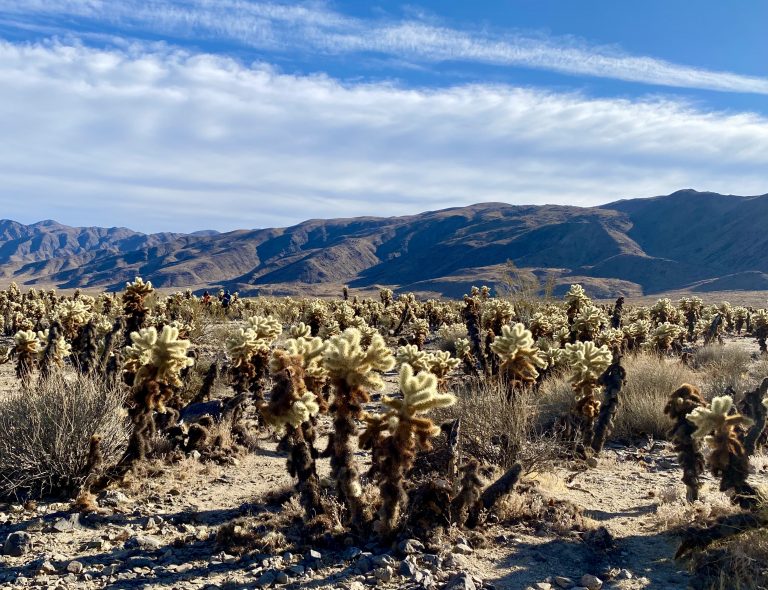
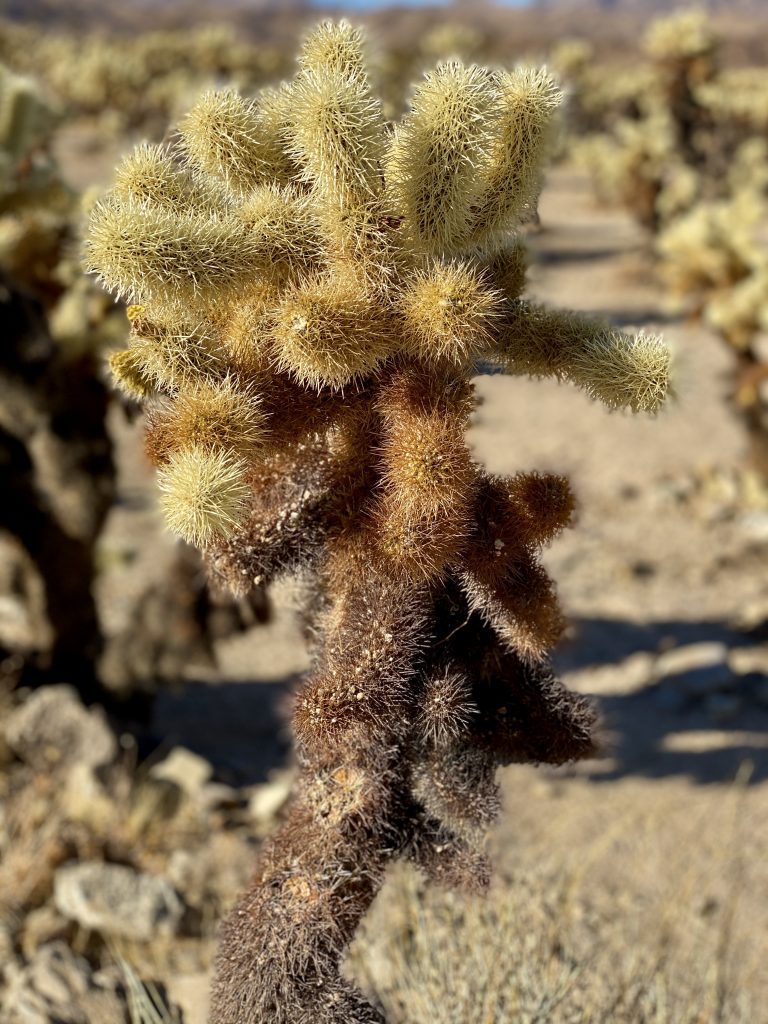
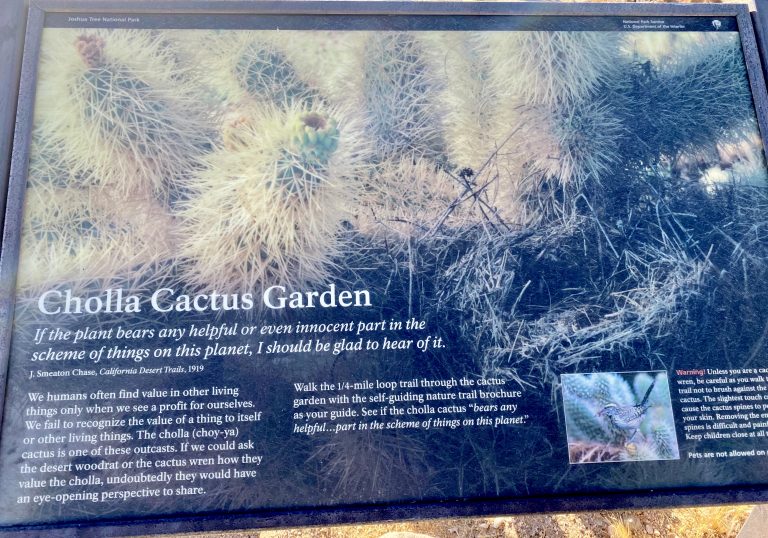
One Response
A wonderful account and great pictures. Thanks for posting this.
In 2021 I thought I would hike the ladder canyon. I had previously hiked many of the trails and slots here, but never this trail so I thought I’d give it a try. I made it up the first few ladders and then got to the one shown in your 4th image. I dealt with the missing 2nd rung OK, and then climbed another couple that seemed dubious because they were so bent and beaten up. Then I got to the 5th rung, which was badly dented and coming loose. I figured it would very likely not support my weight (I’m 6-4 and with a pack I’m over 200 lbs). Then I looked more closely at the upper end of the ladder, a few feet below the top, and realized that would be would be hard going up and risky as heck going down. I bailed. I’d seen plenty of other wonderful canyons and slots right here and didn’t need to take on the high risk of seeing one more.
IMHO that ladder was a disaster waiting to happen. Worse than when you climbed it, and now a danger to all who would use it. I wonder it it has been replaced and/or removed since then. I hope so.